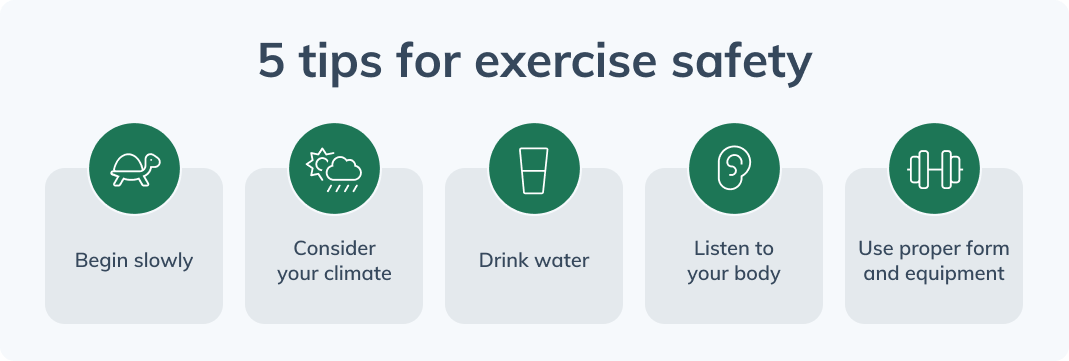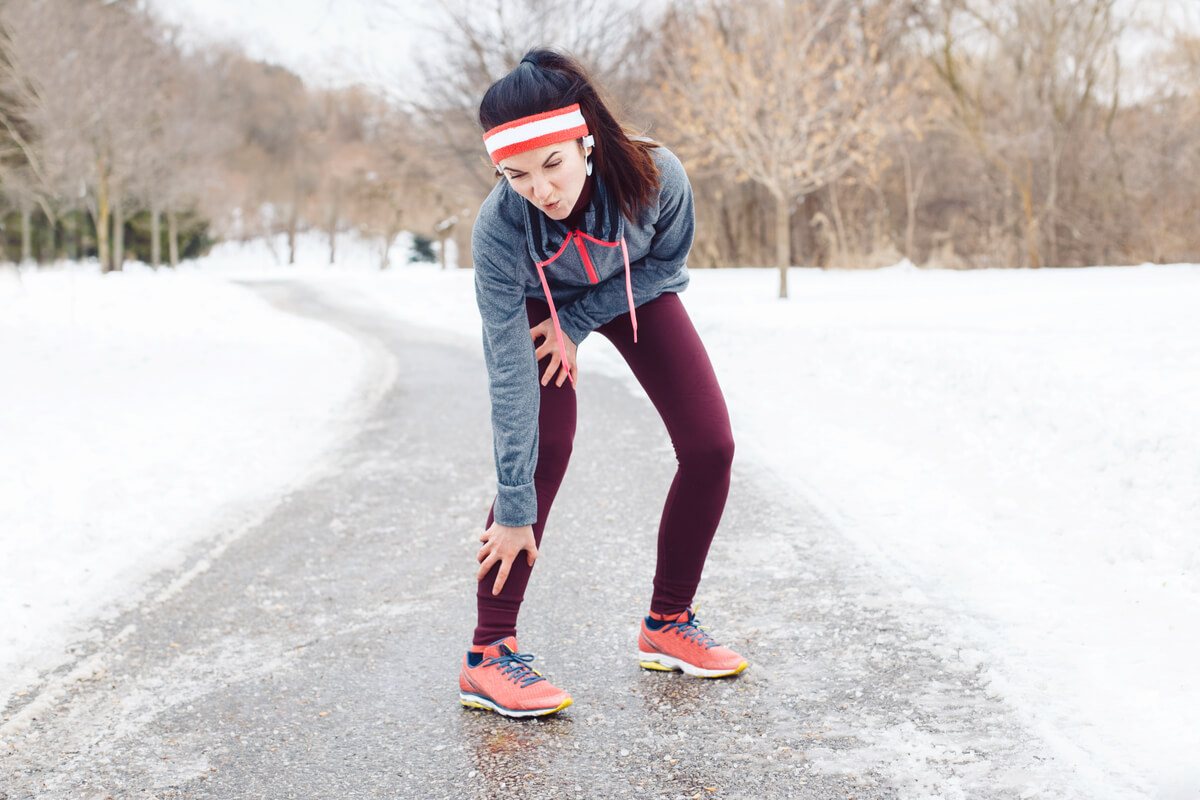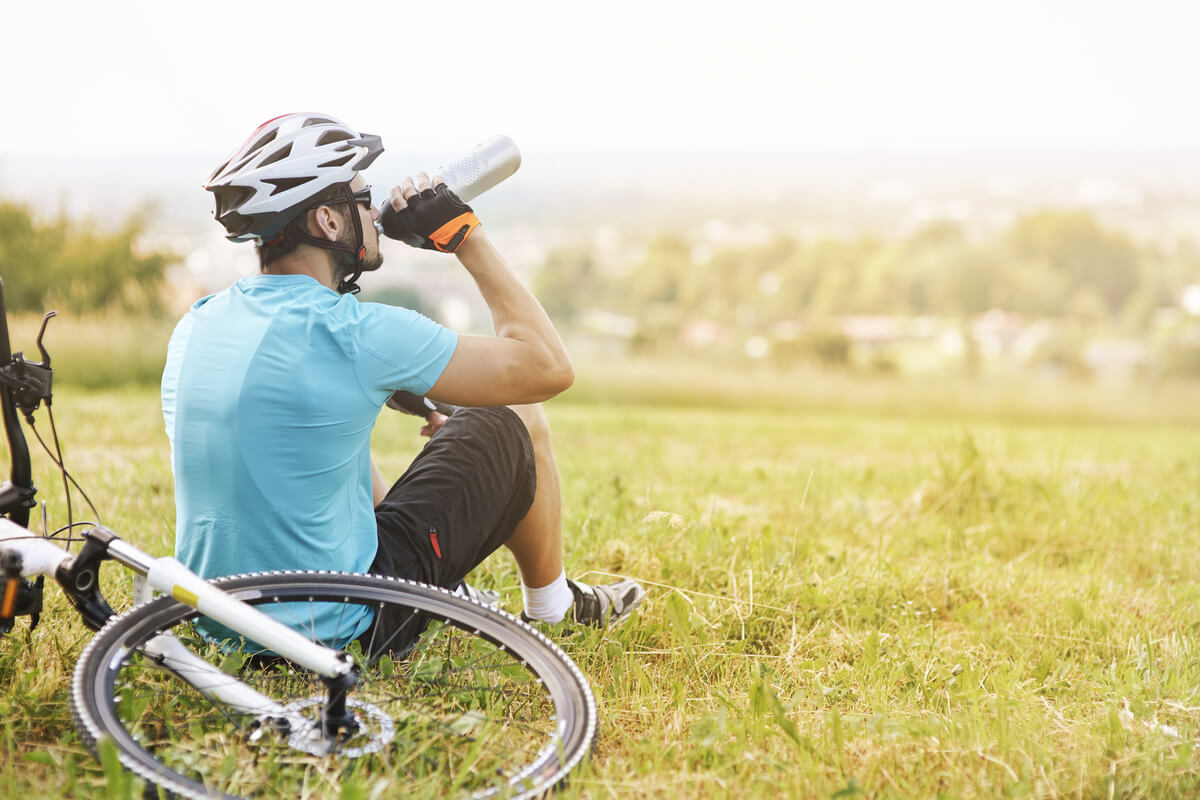5 tips for exercise safety

1. Begin slowly
Choosing the appropriate activity type, duration, and frequency of exercise can help reduce the risk of injury. Individuals who are more physically fit can endure a more intense exercise routine than those who do not exercise regularly. According to the Physical Activity Guidelines for Americans, the safest options are moderate-intensity and low-impact activities. Walking, bicycling, dancing, golfing, and swimming tend to have the lowest injury rates, making them safer forms of exercise. (11) It’s important to note that although these activities have low injury rates, it’s principal to be active in a safe environment. When choosing where to be active, look for the following:- Designated, well-maintained areas without holes or obstacles
- Other people being active or supervising the area (e.g., lifeguard) (1)
- Physical separation from motor vehicles (e.g., bike lanes, sidewalks, walking paths)
- Suitable lighting (11)
- Duration
- Intensity
- Frequency (9)
- Individuals with certain chronic health conditions
- Individuals with a sedentary lifestyle (9)
- Individuals who are pregnant
- Older individuals (11)
2. Consider your climate
Peak summer heat or winter chill may deter you from getting outside for physical activity, but staying active year-round is best for your health. (13) Being outdoors during extreme weather puts additional strain on the body. Muscle injuries and weather-related illnesses can occur if proper preparation and safety measures are not taken. (14) Hot weather workouts can put you at risk for dehydration and heat stroke. (6) When exercising during hot weather consider the following tips:- Drink plenty of water before, during, and after exercise.
- Exercise at dawn when it’s cooler.
- Stay in the shade whenever possible. (11)
- Take frequent breaks.
- Wear lightweight clothing.
- Wear sun protection (e.g., hat, sunscreen). (14)

Muscles are more susceptible to injuries in cold weather. (14)
- Decrease your pace or intensity as needed.
- Drink plenty of water before, during, and after physical activity.
- Insulate your head and extremities with gloves, socks, and a hat. (12)
- Warm up and cool down longer.
- Wear layers of clothing.
- Wear sun protection as needed. (14)
3. Drink water
Evidence suggests that inadequate hydration can negatively impact exercise performance and potentially increase the risk of an injury. Drinking enough fluids before, during, and after exercise training can increase endurance and support overall performance. (3)(4) The amount of water needed to maintain adequate hydration is different for everyone. To determine your unique hydration needs, it’s best to work with your healthcare provider. Factors that can influence hydration requirements include:- Altitude and climate
- Body size
- Certain medical conditions (e.g., cystic fibrosis, diabetes, heart disease)
- Certain medications (e.g., diuretics)
- Exercise duration and intensity
- Sweating (10)(15)

Drinking water when exercising can help prevent dehydration.
- Dark colored urine
- Decreased exercise capacity
- Dry or cracked lips
- Fatigue
- Flushed skin
- Headaches
- Muscle cramps
- Thirst (5)(15)

Dark-colored urine indicates that you should drink more water.

Hydrating before, during, and after exercise can help maintain adequate hydration levels.
4. Listen to your body
Listening to your body before, during, and after your exercise regimen can help prevent injuries. Having sore muscles after exercising is to be expected; however, high levels of exhaustion and pain may be signs that you’re overdoing it. (8)(9) Exercise should not be painful, and if you experience pain while exercising, stop immediately. (9) If a mild injury has occured, a regimen of cold therapy in combination with rehabilitative exercises (that do not worsen pain) may help alleviate symptoms. (16) Functional supports, such as a compression bandage or brace may also be used to help manage swelling and pain. (7) If the injury does not seem to be getting better, or any of the following have occurred, contact your healthcare practitioner as soon as possible:- Chest pain during or after exercise
- Joint appearing out of position or audibly popping out of place
- Serious injury, severe pain, or bleeding (9)
5. Use proper form and equipment
If you are new to an exercise or activity, it’s important to learn good form and invest in the proper exercise equipment. Performing exercises incorrectly can lead to serious injuries. Online videos, community lessons, fitness classes, and personal trainers are all resources that can be used to learn how to perform exercises properly. (9) Wearing appropriate clothing, shoes, and safety gear is also essential for preventing injuries. For example, wearing reflective clothing and lights when doing outdoor activities (e.g., bicycling, running) in the dark can help increase visibility. (11) Before starting a new activity, be sure to have all of the proper knowledge and equipment to stay safe.The bottom line
Exercise is safe for most individuals and adding an exercise routine to your daily regimen can support overall health. However, practicing exercise safety is essential for preventing an exercise-related injury. Walking, bicycling, dancing, golfing, and swimming are some of the safest forms of exercise, making them great choices for individuals with concerns about exercising. To find the best exercise routine for your unique needs, consult your integrative healthcare provider.- American Red Cross. (n.d.). Swimming safety. https://www.redcross.org/get-help/how-to-prepare-for-emergencies/types-of-emergencies/water-safety/swim-safety.html
- Auger, N., Potter, B. J., Smargiassi, A., Bilodeau-Bertrand, M., Paris, C., & Kosatsky, T. (2017). Association between quantity and duration of snowfall and risk of myocardial infarction. Canadian Medical Association Journal, 189(6), E235–E242.
- Backes, T. P., & Fitzgerald, K. (2016). Fluid consumption, exercise, and cognitive performance. Biology of Sport / Institute of Sport, 33(3), 291–296.
- Convertino, V. A., Armstrong, L. E., Coyle, E. F., Mack, G. W., Sawka, M. N., Senay, L. C., Jr, & Sherman, W. M. (1996). ACSM position stand: Exercise and fluid replacement. Medicine & Science in Sports & Exercise, 28(10).
- Ellis, E. (2020). Hydrate right. Academy of Nutrition and Dietetics – Eat Right. https://www.eatright.org/fitness/sports-and-performance/hydrate-right/hydrate-right
- Ellis, E. (2021). Exercise safely in hot weather. Academy of Nutrition and Dietetics – Eat Right. https://www.eatright.org/fitness/sports-and-performance/hydrate-right/exercise-safely-in-hot-weather
- Halabchi, F., & Hassabi, M. (2020). Acute ankle sprain in athletes: Clinical aspects and algorithmic approach. World Journal of Orthopedics, 11(12), 534–558.
- Markus, I., Constantini, K., Hoffman, J. R., Bartolomei, S., & Gepner, Y. (2021). Exercise-induced muscle damage: Mechanism, assessment and nutritional factors to accelerate recovery. European Journal of Applied Physiology, 121(4), 969–992.
- National Institutes of Health. (2020). How to avoid exercise injuries. MedlinePlus. https://medlineplus.gov/ency/patientinstructions/000859.htm
- Texas Department of Public Safety. (n.d.). Proper hydration for exercise – water or sports drinks. https://www.dps.texas.gov/section/training-operations-tod/proper-hydration-exercise-water-or-sports-drinks
- U.S. Department of Health and Human Services. (2019). Physical activity guidelines for Americans 2nd edition. https://health.gov/sites/default/files/2019-09/Physical_Activity_Guidelines_2nd_edition.pdf
- U.S. Department of Veterans Affairs. (n.d.). Tips for cold weather physical activity. https://www.move.va.gov/docs/NewHandouts/PhysicalActivity/P17_TipsForColdWeatherActivity.pdf
- U.S. Department of Veterans Affairs. (2021). Five tips for winter exercise. https://www.myhealth.va.gov/mhv-portal-web/ss20190116-winter-proof-your-workout
- Victoria State Government. (2015). Exercise safety. Better Health. https://www.betterhealth.vic.gov.au/health/healthyliving/exercise-safety
- Victoria State Government. (2018). Exercise – the low-down on hydration. Better Health Channel. https://www.betterhealth.vic.gov.au/health/healthyliving/Exercise-the-low-down-on-water-and-drinks
- Vuurberg, G., Hoorntje, A., Wink, L. M., van der Doelen, B. F. W., van den Bekerom, M. P., Dekker, R., van Dijk, C. N., … & Kerkhoffs, G. M. M. J. (2018). Diagnosis, treatment and prevention of ankle sprains: Update of an evidence-based clinical guideline. British Journal of Sports Medicine, 52(15), 956





